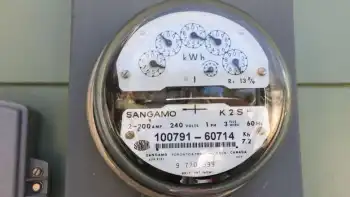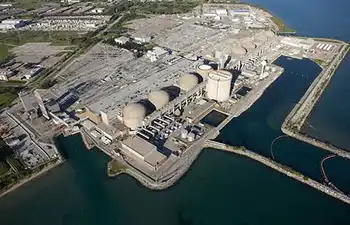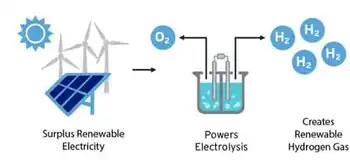Hydrogen and Electricity compared for Transmission, Storage and Transportation
By IAGS
Electrical Testing & Commissioning of Power Systems
Our customized live online or in‑person group training can be delivered to your staff at your location.

- Live Online
- 12 hours Instructor-led
- Group Training Available
The report's main premise is that since hydrogen is not an energy source but an energy carrier its economic and environmental qualities should be compared to those of electricity, the only other commonplace energy carrier. It therefore compares the actual energy available when hydrogen and electricity carriers are employed and finds that electricity delivers substantially greater end use energy, concluding that "electricity offers more energy efficient options that might preclude mass-scale emergence of hydrogen technologies."
To illustrate the relative efficiencies of the two energy transmission methods, the study evaluated transmission of 4,000 megawatts of wind energy generated in the Great Plains wind fields to Chicago. Carrying the energy generated from remote renewable sources - solar, wind, etc. - to distant markets as hydrogen, requires that the electricity generated in wind turbines or solar panels be used to break water molecules into hydrogen and oxygen in a process called electrolysis. At the point of use (eg. on board a fuel cell vehicle,) hydrogen must again be converted into electricity.
Once energy penalties are taken into account, the above process leaves only 45-55% of the original energy compared to 92% if transmitted as electricity. Electrical transmission provides roughly twice the end use energy.
Storage is no less of a problem. Hydrogen is envisaged as a medium to store energy generated by renewables, making power available on demand. However the same aforementioned energy penalties apply while other energy storage technologies deliver comparatively more energy. Hydrogen storage returns around 47% of original energy, while advanced batteries return 75-85%.
According to the report, using electricity to charge electric vehicles (EVs) provides twice the miles per kilowatt hour than employing electricity to make hydrogen fuel. Lithium ion batteries developed for portable electronics can store electricity at an energy density about six times greater than conventional lead acid batteries and in the future could go nearly 250 miles between charges.
The report's authors Patrick Mazza and Roel Hammerschlag are particularly enthusiastic about plug-in hybrid electric vehicles (PHEV). Hybrid cars like Toyota Prius are already on the road today by the thousands. Their batteries are kept charged by power generated onboard. True to their name, plug in HEVs are hybrids that can be plugged in and draw charge from the power grid. Since they also have a fuel tank, PHEVs can take advantage of EV efficiencies without range and charge time limitations.
With a nickel metal hydride battery, similar to the one used in hybrids today, a PHEV could go up to 60 miles on grid power before the engine seamlessly kicks in. Considering the fact that half the cars on the road in the U.S. are driven fewer than 20 miles per day, most drivers, assuming they recharge their cars at night, will seldom have to dip into their gasoline tank. As a result, PHEV could reduce fuel consumption 85% over a comparable conventional car. That means that a plug-in hybrid SUV would consume less gasoline than a "regular" compact car, without a performance penalty. If such car runs on alcohol fuels instead of gasoline, oil consumption could be reduced even further.
The study distinguishes between hydrogen and fuel cells. While a hydrogen fuel system is hindered by multiple inefficiencies, fuel cells can form an important part of highly efficient systems that convert alcohol fuels to electricity. Fuel cells can operate as stationary electrical generators, potentially at significantly higher efficiencies than central power stations or other distributed generators. Emergence of a substantial fuel cell market is in no way conditioned on mass application in vehicles or development of a hydrogen network.
The study recommends that hydrogen and electricity advocates focus on complementary development that can support both pathways. This includes rapid expansion of renewables, improvement in hybrid vehicle technology, vehicle-to-grid applications that employ parked vehicles as grid energy storage, and development of biomass supplies from which liquid vehicle fuels and hydrogen can be made.











